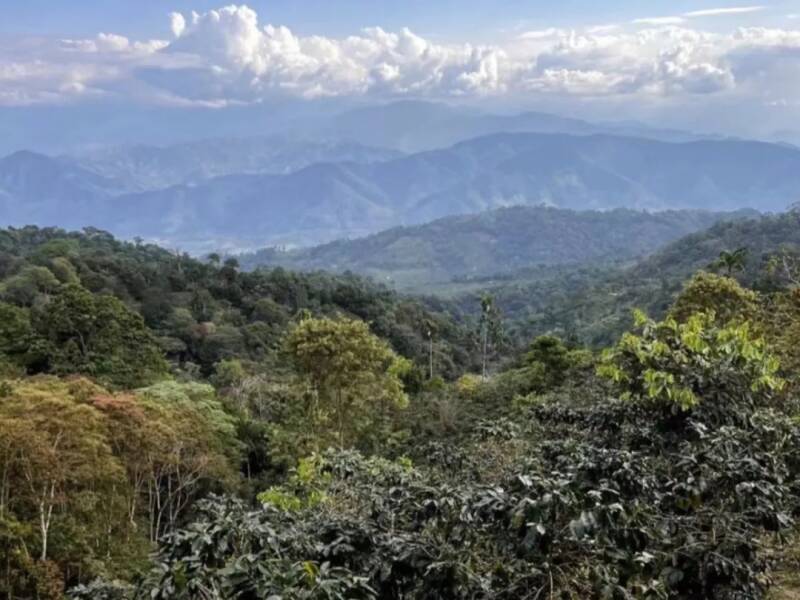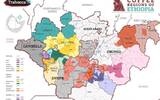Peruvian coffee production increased by 7%! Coffee and other agricultural products are expected to increase exports to China
Recently, the United States Department of Agriculture released the status of the coffee industry in Peru, a South American country. According to the report, last year, Peruvian coffee production decreased due to the influence of El Ni ñ o.
But at present, Peru has basically got rid of the influence of El Ni ñ o, and there is a growing trend in coffee production and exports, which is expected to increase by 7% and 6% respectively in the 2024 marketing year.

Coffee producers are challenging in the first quarter of fiscal year 2023. Due to the influence of El Ni ñ o, rising temperatures, lack of Rain Water, and the continued occurrence of coffee leaf rust, coffee growth is affected.
In the following quarters, slowly getting out of the control of El Ni ñ o, production returned to 3.95 million bags, down 6 per cent from previous estimates but up 9 per cent from the previous year.
As a result, coffee production is expected to reach 4.22 million bags (60 kg / bag) and exports are expected to reach 4.07 million bags in the 2024Compact 25 marketing year. All because the current international coffee prices remain high, encouraging farmers to invest more in coffee cultivation and fertilizers, helping to increase production and exports.
At present, the Peruvian national coffee harvest area is estimated to be 335000 hectares, the same as the previous year. In terms of harvest, the average yield is expected to be 756 kg per hectare, a slight increase over the previous year.
Although there is an upward trend in production, coffee production is still affected by the outbreak of coffee leaf rust in 2013. In addition, the infestation of coffee moths also affected nearly 40% of current coffee production in 2020. Mitigation measures such as phytosanitary treatment and better trees are needed.

On the export side, the coffee export volume of Peru 2024Coffee in the 25 marketing year will increase by 6.4% over the previous year with the increase of production, and is expected to reach 4.07 million bags (60 kg / bag). At present, the United States remains the largest market for Peruvian coffee, accounting for 28 per cent of total exports, followed by Germany and Belgium with 18 per cent and 9 per cent.
In 2019, Chinese companies invested US $1.3 billion to buy a 60% stake in Peru's Terminales Portuarios Chancay S.A., and the Peruvian State Port Authority (APN) granted Cosco the exclusive right to operate the port. However, when it was nearing completion, Peru unilaterally announced the revocation of the exclusive management rights of Chinese enterprises.
Recently, the Peruvian President signed an amendment to the National Port system Act on June 5, which stipulates that the Peruvian National Port Authority has the right to grant exclusive management rights to private enterprises, and Chinese enterprises can regain the exclusive right to operate the Peruvian port of Jianqiankai.
Moreover, the Peruvian Minister of Labor and Employment Promotion believes that it is very advantageous to maintain good relations with China, and that Chinese investment in the port of Chankai will create many jobs and help build Peru into a port hub in Latin America. It will also help increase trade between China and Peru.
In 2023, the import and export volume of bilateral goods between China and Belgium will reach 37.6912943 billion US dollars, including fruits, coffee and other agricultural products. In response, Peruvian coffee farmers believe that China's coffee consumption is growing, and the increase in trade between China and Peru will help to increase Peruvian coffee exports to China.
Important Notice :
前街咖啡 FrontStreet Coffee has moved to new addredd:
FrontStreet Coffee Address: 315,Donghua East Road,GuangZhou
Tel:020 38364473
- Prev

Why do coffee flowers burn when running? These details must not be ignored when making pictures of lattes, Australian white, cappuccino and other dairy coffees!
To be reasonable, many times the patterns we make don't look good, not because the technology is not good, but because the appearance of some difficult and miscellaneous diseases has dragged us back and made it impossible for us to make pleasing drawing patterns! For example, the concentrated oil mentioned in the previous article is excellent! In addition, there are many reasons
- Next

Ethiopia| Introduction to Sidamo coffee producing areas such as Mudamo and Hamau Coffee
African coffee has a high reputation in the global coffee market. Among them, Ethiopia, an African country, is recognized as the birthplace of coffee, and Ethiopia is Africa's largest Arabica coffee producer and has a long history of coffee. Ethiopia is located in Northeast Africa. It is a landlocked country with a land area of
Related
- Being chased out of the rain in front of Starbucks?! Store: Sheltering from rain under umbrellas poses a safety hazard
- The white moonlight has changed?! Lucky launches "Big Winter Pear American"
- Hand-brewed coffee three-stage method, high-sweet and universal brewing method to share! What does the high sweet water level of hand-brewed coffee mean?
- What is the difference between raw, refined and full espresso coffee? How to extract espresso and taste good?
- A complete list of coffee bean names and their meanings! What is Yejia Shefi coffee? Where is Mantelin coffee?
- What grade does Arida Manor Kaduai coffee beans belong to? What treatment is Arida ASD slow anaerobic sun exposure?
- The milk tea cup becomes smaller?! Overlord Tea Girl launches a new "Return to Yunnan" series
- Accused of selling counterfeit and high-priced coffee beans! Well-known boutique coffee brand "Oukelao" bowed and apologized!
- How to make espresso dumplings? Can I eat coffee and glutinous rice balls together?
- Save the unformed and stagnant powder cakes in one second! What is the problem with stagnant water in the powder bowl of the espresso machine?

